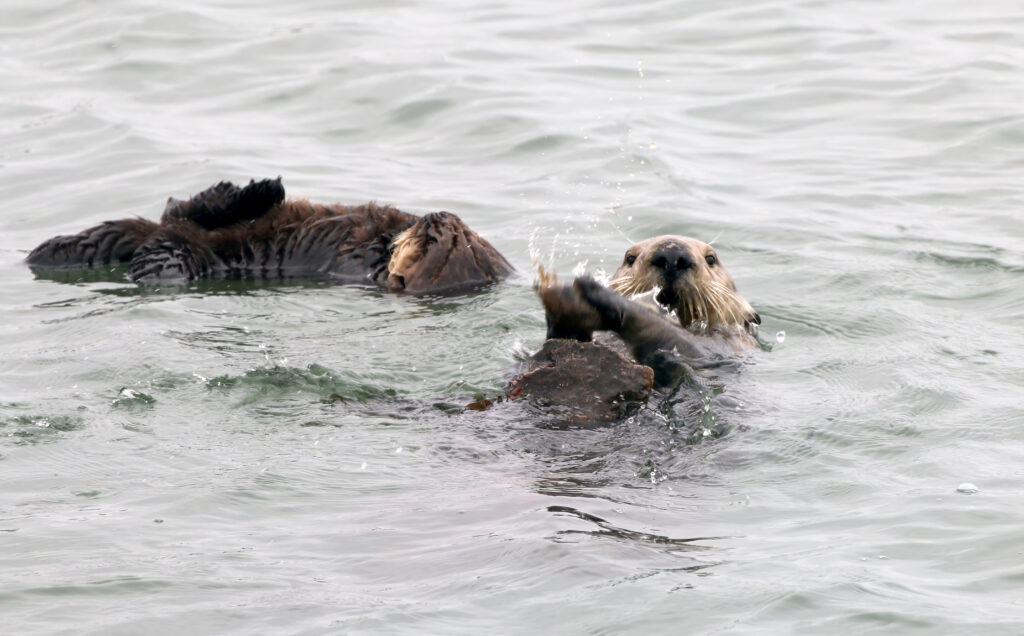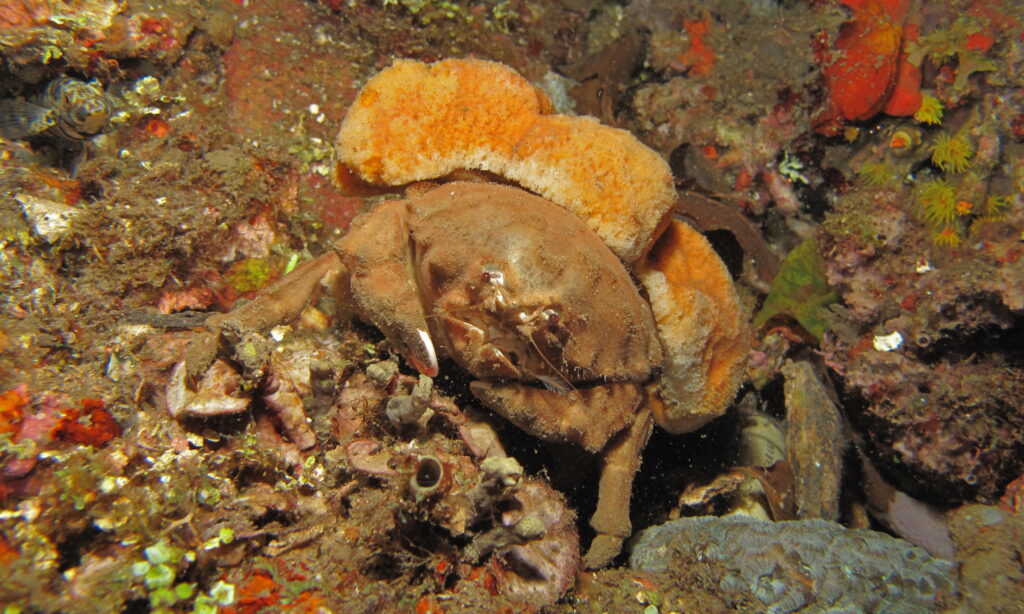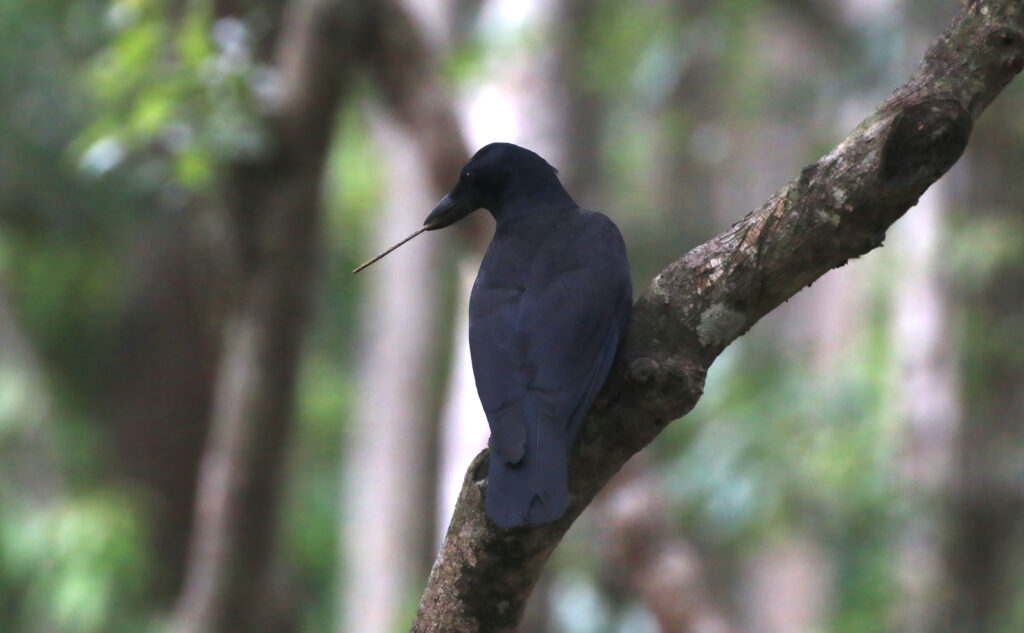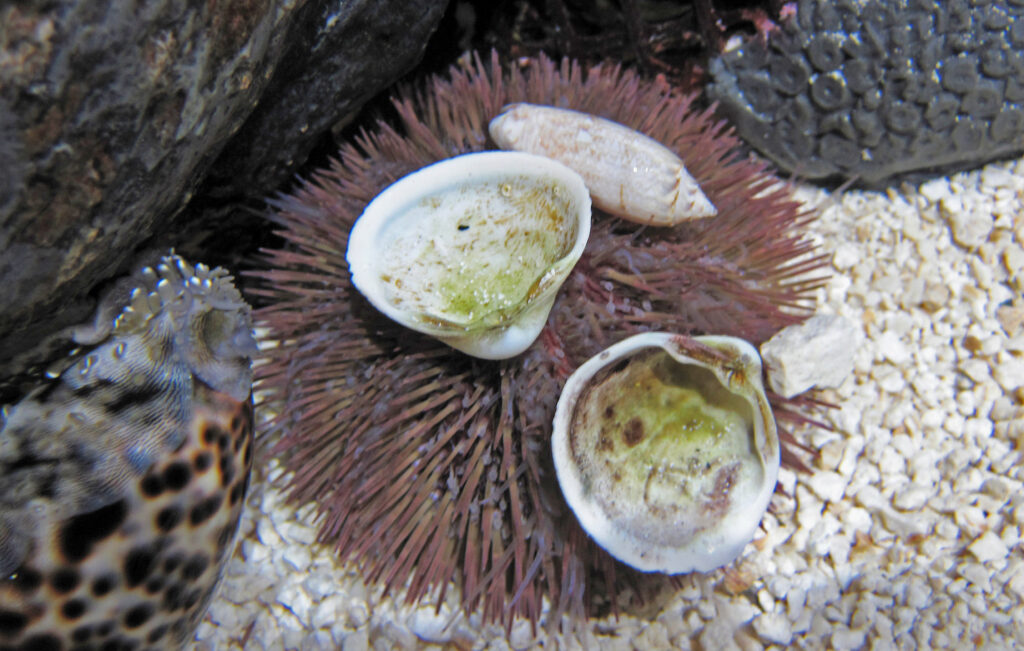Tools of the Wild: Unveiling the Crafty Side of Nature
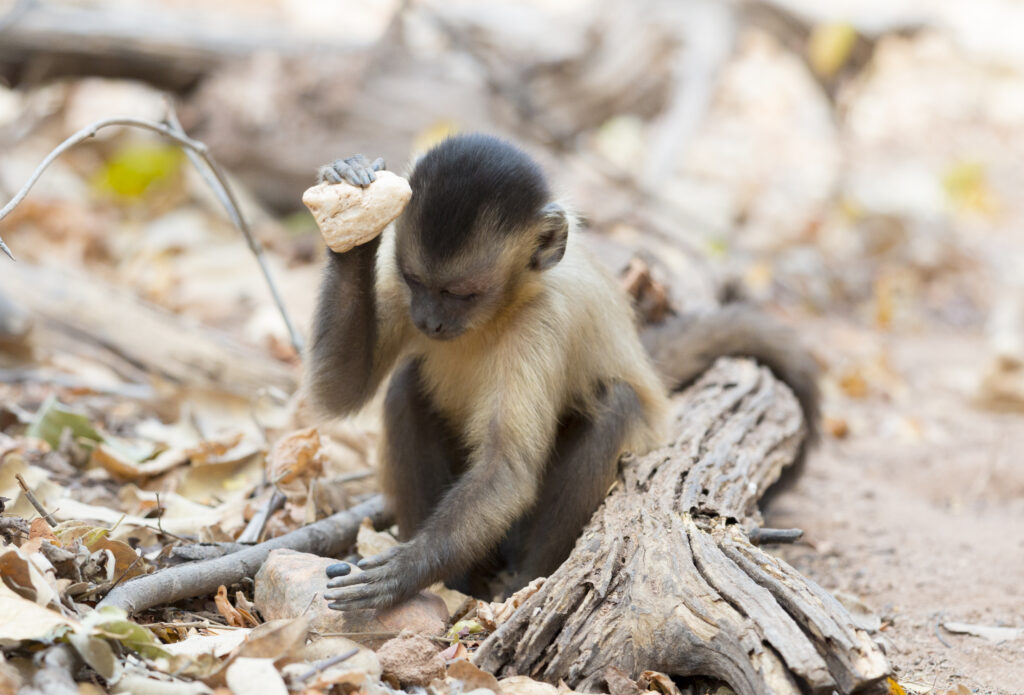
A tiny blanket octopus, floating in Australia’s Great Barrier Reef, holds venomous jellyfish tendrils along its arms for protection. A macaque on a Thai beach smashes shellfish open with a stone. Searching for a mate, a cricket in southern India carefully carves a hole in a leaf to amplify his love song.
Like you—and the device you’re reading this on—these creatures are using tools.
Archaeologists have long considered tool use to be an evolutionary milestone that distinguished our lineage from other animals. Humans were considered the technological species.
But since the mid-20th century, hundreds of nonhuman species have been found busily making use of myriad natural materials. There are orangutans that pry seeds with sticks, elephants that swat flies with trunk-held twigs, bees that place dung to ward off predatory wasps, archerfish that turn water itself into a spear, and many more.
Given we now know tool use appears across many different species, do humans still deserve bragging rights?
As archaeologists, we have worked for decades studying tools made by human ancestors and relatives, as well as wild tool-using animals such as monkeys, sea otters, and crows. Confronted by the expanding diversity of tool users, researchers have reached a tipping point: It’s time to rethink the meaning of tool use—and what it implies about the intelligence of humans, nonhuman animals, and our evolutionary ancestors.
WILD TOOL USE
Tools aren’t part of our body, but they allow us to act on the world in new ways. Humanity’s relationship with them is complicated, long-term, and committed. The archaeological record tells us that more than 3 million years ago, human ancestors began breaking rocks into handy implements. Since then, tool-related physical traits such as flexible hands and shoulders have been evolutionarily hard-baked into our bones.
It is now clear that many aspects of human tool use are echoed throughout the animal world. Like our hand adaptations, sponge crabs have also evolved appendages optimized for tool use. Their back legs point upward on mobile joints, with spines and hooks that allow them to clasp objects such as shells, rocks, and algae as a defensive camouflage or decoration.
We humans recognize that we need a tool, find the materials to make one, and then use it to gain some benefit. So do some Aphaenogaster ants: Upon finding liquid food on the forest floor, they search for suitable material—usually a piece of leaf or soil—to soak up the liquid and transport it home. If the right size tool is not found, they make one on the spot from larger pieces.
One of the most influential steps taken by hominins—our ancestors since we split from chimpanzees and bonobos about 7 million years ago—was to start breaking apart stones, leaving sharp edges. Turns out, wild bearded capuchin monkeys in Brazil do this too. Meanwhile, unbroken stone tools are used by some sea otters, Egyptian vultures, digger wasps, corolla spiders, and more.
What of shoes and oven mitts, sunscreen and underpants? Another trait we share with various critters is using tools to help insulate ourselves from bodily harm. Dolphins off Western Australia protect themselves by holding tough sea sponges over their beak (or rostrum) as they forage in the sandy seafloor. To avoid strong sunlight or damaging waves, many species of sea urchins cover themselves with rocks, debris, and even human rubbish.
From this sprawling menagerie, one thing is clear: Tool use does not unambiguously identify human-like mental processes. There appears to be no need for a large brain or any other special mark of complex cognition or physical ability. The tool user may or may not consciously think about what it is doing, understand what will happen next, or intend any outcomes.
In our view, any thoughts or motivations for tool use need to be explored instead of assumed. Human standards may not be the best starting point for those explorations. What a spider wants, what an orca holds, or what an octopus plans can be quite alien to our everyday experience. We need to meet other animals on their own terms.
REDEFINING TOOL USE
A helpful notion of tool use should work at all scales: from a solitary woodpecker finch probing insects with a cactus spine to a chimpanzee community sharing technologies across generations, from the sharp rock of a hominin ancestor to the Saturn V rocket.
At its heart, tool use requires individuals, objects, and some kind of physical interaction between them. The tool allows its user to extend or alter their natural abilities. The key is that the object enables novel actions, giving us a starting point for a definition: Tools are enabling objects.
More specifically, we can say that tool use is the attentional use of enabling objects. The animal must sense that it is using the tool. Researchers can detect a creature’s attention by watching what it does. Where animals repeatedly look, reach, or echolocate—what they fly or swim or slither toward—provides clues about their attention. For those animals that are no longer around, archaeology offers ways to reconstruct attention. This can include identifying damage from use and inventorying diverse objects found gathered in one place.
What of the objects themselves? Are there any special requirements that make them a tool?
Material is immaterial. The objects can be anything—sand grains, grass stems, soap bubbles, you name it. If a critter can perceive and manipulate the item, it’s fair game.
But we do believe there is one limitation: Tools must be portable. With a watering can, you can dampen any garden in the world. With a hose attached to your house, not so much. The obvious drawback for fixed objects, even flexible ones like a hose or a hanging vine, is that your reach is extremely limited. From this come other limits on how you can combine one object with another or share. Portable tools can be passed around and passed on. [1] [1] We know that many animals do use attached things in ways that superficially resemble tool use. For example, shrike birds cache prey on cactuses, wrasse fish pound open shellfish by hitting them on hard corals, and cows rub themselves on fence posts to scratch those bits that hooves don’t reach. These are important actions for those animals, and they deserve to be studied in their own right, not as “borderline” or “proto” or sort-of tools. We’ve decided to call them “fixels.” Whether an immovable anvil or a good scratching tree, fixels are their own category, involving distinct strategies from the animals that use them and appropriate attention when scientists investigate them.
TOOLS AND SMARTS
Under this new definition, tool use is decoupled from intelligence, intention, and human-like cognitive processes; tool use instead describes an action—a behavior that can be observed.
Human tool use has long served as the de facto standard to assess other animals’ capabilities. Anthropologists have asked: Which animals do things like humans—and therefore must be clever like our kind? What can these other species tell us about ourselves and our ancestors?
We think it’s time to flip the script.
Instead, researchers should ask what tool use reveals about how animals view their worlds. What is important to those creatures, and how do they get things done?
Scientists should also avoid lumping an entire species together when talking about “tool users.” As far as researchers have observed, most individual chimps do not use stone tools. And most dolphins, monkeys, octopuses, and crows seem to forgo tools entirely. Instead, this behavior, like many others, is often related to factors such as sex, age or stage-of-life, social role, or individual personality—even in those leaf-sponging ants. For most animals, we know little about the pressures that prompt them to select, modify, and team up with pieces of their world.
Features critical to animals’ success sometimes evolve independently in distantly related lineages—a fascinating process called “convergent evolution.” Most bats, birds, and bees can all fly, for example. And the eyes of humans and squids evolved separately from one another.
As with physical traits, the independent evolution of similar behaviors can tell us a lot about what was beneficial in an animal’s evolutionary environment—be it social, physical, sexual, or otherwise. What can animals that use tools tell us about how they succeed in their world? How does human-like tool use fit into the behavioral kaleidoscope of evolutionary success?
We break from the long-held notion that tool use distinguishes humans (or human-like intelligences) from the rest of the animal kingdom. But our thinking is not without precedent. Distantly related animals in vastly different environments are often grouped in commonsense categories. Animals that burrow or nest, animals that perform courtship displays, animals that cache food, animals that live in colonies, animals that fly—all these categories include representatives from diverse branches of the evolutionary tree.
“Animals that use tools” is a useful addition to these descriptive, observable categories. Viewed this way, tool use ceases to be a museum tray of curious behaviors through which we occasionally rummage, trying to find miniature or off-kilter versions of ourselves. Instead, we see a wonderfully diverse group whose true ingenuity will only shine once we learn to share the spotlight.































